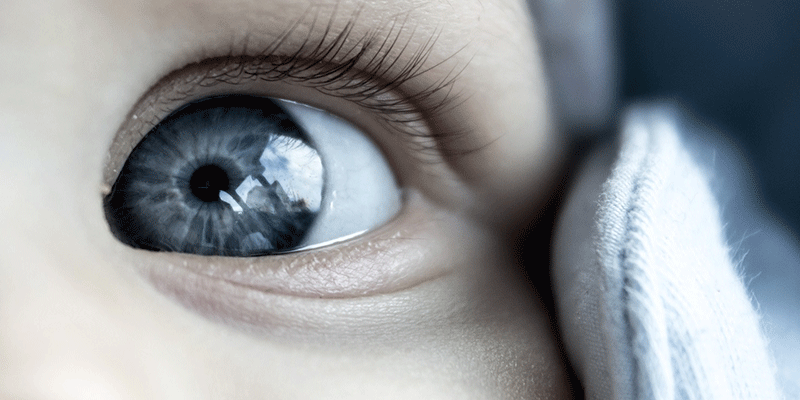
Cross-Eyed?
Parents also often note that their newborns’ eyes appear to cross from time to time. For the first 6 months of life this can be normal. To begin with, to look at something the brain has to know where to point the eyes. For the first 2 to 4 weeks of life vision is not accurate enough for the baby’s eyes to find a target a lot of the time. Parents often feel like their newborns are looking past them rather than at them, because they are. By the fourth week of life, however, your baby will focus on your face if you’re cradling him.
Most visual development occurs in the brain, not in the eyes themselves. One of the greatest challenges for the developing brain is to coordinate visual signals from one side to the other. Nerve signals from the eyes travel through optic nerves and split off to both sides of the brain. To make sense of those signals, the 2 sides of the brain have to cooperate, comparing information and coordinating eye movement in the desired direction. Until age 2 months you may notice your infant will follow your face or a toy a little way, then lose it as it crosses from one side to the other. By 2 months, however, he should be able to track from right to left and back again.
The next big visual milestone occurs at 6 months of age. By this time the 2 sides of the brain are on good terms with each other. Until this point the eyes track together as long as they both have something to look at, but if one is deprived of input (from being covered by a hat, for example), it might drift off in its own direction. By 6 months of age the eyes should continue looking the same direction even if one of them is covered temporarily. We test this in the clinic by covering 1 eye for 3 seconds, then suddenly uncovering it and looking to see if it’s still tracking with the opposite eye. We call this test the cover-uncover test.
Sometimes the shape of a child’s face makes it look as though the eyes are crossed even when they are not. A child with a broad nasal bridge may appear to have an inward-looking eye, when in fact he’s just looking off to the side. You can check this by watching the light reflection in your child’s eyes from a window or lamp; if it falls in the same place on each eye, the eyes are working together.
Even with office screening, however, we don’t always catch an eye that tends to deviate. Deviations occur more often when the child is tired. If you ever notice that your 6-month-old or older child has an eye that doesn’t always look the same way as its partner, alert his doctor. It’s critical that an eye specialist (ophthalmologist) examine the child. What some people call a lazy eye (amblyopia) may be a sign that one eye doesn’t see as clearly as the other. When the brain is forced to make 1 picture from 2 very different inputs, it starts to ignore the signals from the worse eye. Over time this process becomes irreversible, leading to partial blindness in the weaker eye. In most cases, you should address the problem before the child turns 3 to ensure he’ll grow up with normal depth perception. Treatments for amblyopia vary based on the cause and severity of the condition. Some children require glasses or patches that force the brain to pay attention to signals from the weaker eye. Other kids need surgery to shorten or lengthen certain muscles that control eye movement.
Author David L. Hill, MD, FAAP
Last Updated 6/8/2020
Source Dad to Dad: Parenting Like a Pro (Copyright © American Academy of Pediatrics 2012)
The information contained on this Web site should not be used as a substitute for the medical care and advice of your pediatrician. There may be variations in treatment that your pediatrician may recommend based on individual facts and circumstances.






